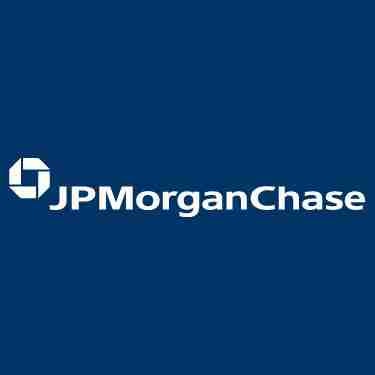When it comes to financials, JP Morgan Chase (JPM) is the best of the breed, or at least Mad Money host Jim Cramer says so – and I am inclined to agree. Citigroup recently reiterated its “buy” rating on the stock. After all, JP Morgan is killing the competition right now.

JP Morgan recently traded at $40.37 a share on a mean one-year target estimate of $47.18, and is priced at just 7.52 times its forward earnings and only 0.85 times its book value. According to Yahoo Finance, the company has an earnings growth estimate of 7.63% a year on average over the next five years, plus it pays a $1.00 dividend (2.60% yield) on a low 18% payout ratio. JP Morgan’s dividends are also incredibly consistent.
They rose from 1.63 cents a quarter in December 1991 to eventually reach a high of 38 cents a quarter, or $1.52 a year, in July 2007, which it held to January 2009. The next quarter, JP Morgan slashed its dividend to 5 cents a quarter (20 cents a year). It boosted its dividend up to 25 cents a quarter ($1.00 a year) in April 2011, where it stands today. With an increase like that and numbers like this, JP Morgan is a great buy – so much so it even enticed Andreas Halvorsen’s Viking Global to ante in last quarter.
In comparison rival Bank of America (BAC) is priced lower than JP Morgan, trading at 7.45 times its forward earnings and just 0.40 times its book value. According to Yahoo Finance, the company also has higher estimated earnings growth, coming in at 15.00% over the next five years – but it does have neither the upside nor the dividends. Bank of America recently traded at $8.12 a share on a mean one-year target estimate of $9.04 and pays a 4 cents dividend (0.50% yield).
In fairness, Bank of America didn’t always offer such a low dividend. In fact, before this the lowest dividend the company paid was 19 cents a year back in 1986. From there, its dividend increased continually, until reached a high of $2.56 a year (64 cents a quarter) in September 2008. The next quarter, Bank of America’s dividend fell to 32 cents. Then, in March 2009, its dividend hit 1 cent a quarter, or 4 cents a year – where it is now. So, there is a good chance that it could start offering a higher dividend, but I don’t think that will be for a while. John Paulson’s Paulson & Co must be with me on this. He sold out of his position in the company completely during the fourth quarter.
Goldman Sachs (GS) is little better off. It recently traded at $121.13 a share on a mean one-year target estimate of $132.92 and pays a $1.40 dividend (1.20% yield) on a 30% payout ratio. The numbers aren’t terrible, but they just aren’t as good as JP Morgan’s – and Goldman Sachs is priced high. The company is trading at 9.07 times its forward earnings and 0.92 times its book value. Its earnings growth estimate is also a little higher, at 12.15%. To its credit, Goldman Sachs has been able to increase its dividends consistently since 1999, even offering a higher one-time dividend in February 2009, but I just don’t think it is as cheap as JP Morgan. John Griffin’s Blue Ridge Capital thinks so too. It sold out of its position in Goldman Sachs during the fourth quarter.
Wells Fargo (WFC) is positioned worse than JP Morgan on all counts except earnings growth estimates. It lacks the upside – it recently traded at $31.54 a share on a mean one-year target estimate of $34.92. It pays a lower dividend – 48 cents (1.50% yield). It is priced higher – the company has a forward P/E of 8.74 and a P/B ratio of 1.28. Its earnings growth estimate, its one saving grace, are still only marginally higher than JP Morgan’s at 9.78% a year on average over the next five years.
On the plus side, the company has increased its dividends consistently since 1984 and has a low 17% payout ratio, but I just don’t think that is enough. Wells Fargo may be a good hedge because of the consistency of its dividends. Warren Buffett increased his position in Well Fargo during the fourth quarter (see Warren Buffett’s new picks).
Citigroup (C) is priced marginally lower than JP Morgan, with a forward P/E of 7.26 and a P/B ratio of 0.56, and it has a higher 5-year earnings growth estimate, at 9.58%, but it comes up short in other areas. The company recently traded at $34.13 a share on a mean one-year target estimate of $41 and it pays a low 4 cents dividend (0.10% yield).
Citigroup could afford to raise its dividend – its payout ratio is just 1% – and it very well may do that. Historically, Citigroup has offered a high dividend. The company increased its dividend consistently from 1989 to 2007, eventually ending up offering $5.40 in November 2007. By January 2008, that figure had dropped to $3.20 and, before the year was out, it fell to half that for the October payment. Citigroup’s dividend fell dramatically lower the next quarter– it was just 10 cents. Then, it stopped paying dividends at all. It only started back up again in May 2011. Billionaire Julian Robertson is bullish on the company. Robertson opened a 275,000 share position in the company during the fourth quarter (see Julian Robertson’s top stock picks). I like Citigroup because of its low valuation and international presence. It is riskier than JPM though.
JP Morgan comes out as the clear winner in this comparison. Its dividend is a full percentage point higher than Wells Fargo, and even more so than its other competitors. Plus, with its history of paying a strong dividend and its low payout ratio, there is no reason to think its dividend is going anywhere. JP Morgan also has strong upside predicted. It’s not necessarily that the other stocks on this list aren’t, in some cases, good buys – it’s just that JP Morgan has a better combination of risk versus reward.

